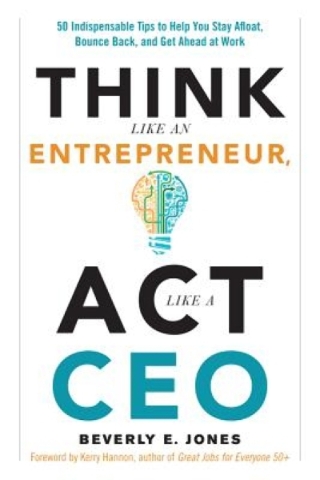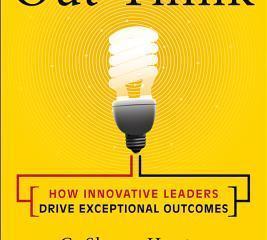

“Think Like an Entrepreneur, Act Like a CEO – 50 Indispensable Tips to Help You Stay Afloat, Bounce Back and Get Ahead at Work” by Beverly E. Jones (Career Press, $15.99).
Way too many workers think of themselves as employees rather than the job-owner/entrepreneur of “Me Inc.” Employees cede control over what they do and how they do it to the employer. They see themselves as gears in the machine of business. Job-owner entrepreneurs, by contrast, look for ways to build their skills and brand by managing up (i.e. bosses,) down (subordinates) and sideways (peers). While recognizing the organization’s collective strategy, they believe in their vision of what they need to contribute and accomplish.
For brand-building, Jones advises:
“Think like an entrepreneur wherever you are.” Focus on the customer; without satisfied customers, no business grows. They spread the word, naming and affirming your brand. As Me Inc., you must know your customers; there’s no one-size-fits all approach to working with them. Always ask yourself how you could better serve them. By meeting their needs, you’ll meet yours. Positive interaction also creates allies needed to promote ideas.
“Talk back to the voice in your head.” Everyone has a cautionary voice in his head. When that voice becomes loud, you fret about what could go wrong. When worry translates to action, you play not to lose, rather than playing to win. Reframe worry to a positive by changing outlook from “I’m not sure” to “Today, I will take the next step toward my goal.”
“Measuring progress makes your goals more powerful.” Knowing what’s been done helps you focus on what needs doing. Develop a “Fitbit” mentality for tasks by measuring activities most likely to contribute to achieving your goal. The more steps you take, the more likely you’ll reach your goal.
Measure the noncontributors. When you recognize they’re not moving you forward, act to minimize their negative effects.
Jones’ underlying theme: Choose optimism.
“Leading through Language: Choosing Words that Influence and Inspire” by Bart Egnal (John Wiley & Sons, $28).
Blue-sky thinking. Core competencies. Leverage. Synergies. — We have to avoid blue-sky thinking by focusing on core competencies to leverage synergies. You’ve heard such corporatespeak in numerous meetings and presentations. Does it explain what’s happened or what must be done? “No,” argues Egnal: “Jargon, buzzwords and corporate-speak usually exist because of a dearth of clear, powerful thinking.”
Egnal believes real words convey real meaning and inspire people with a call to action. Winston Churchill: “We shall fight on the beaches, we shall fight on the landing grounds… we will never surrender.” Could there be any doubt what those words meant to friend or foe?
To succeed, leadership must create believers. It must inform and inspire. It must get people thinking about what must be done and their role in the doing. Leadership communication begins with conveying vision with urgency, excitement, confidence and passion. Example: “Together, we can make our company the industry leader, and we’ll do it by becoming the first choice of … The path requires hard work and difficult choices. The talent we have will make it happen.”
Part of the “hard work” involves recognizing that leadership language must be tailored to audience. That doesn’t mean dumbing down the message, but it does mean considering the words you choose. Speak personally, too; use we, us, our. Speaking from a shared perspective ensures understanding.
Key takeaway: “Replace jargon with substance.”
Jim Pawlak is a nationally syndicated reviewer of business books.






